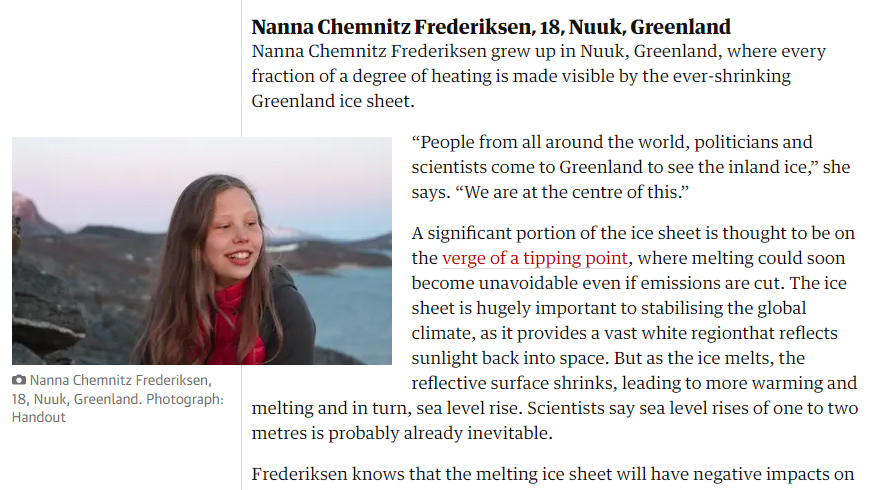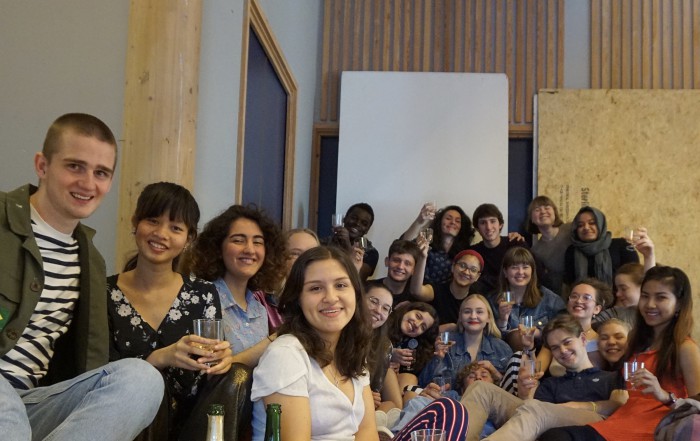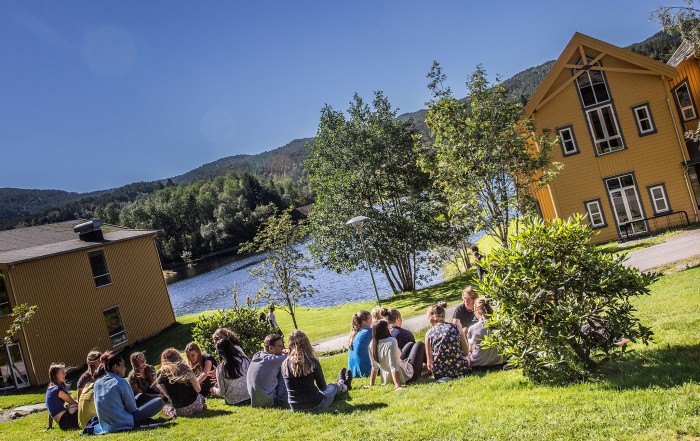“People from all around the world, politicians and scientists come to Greenland to see the inland ice,” she says. “We are at the centre of this.”
A significant portion of the ice sheet is thought to be on the verge of a tipping point, where melting could soon become unavoidable even if emissions are cut. The ice sheet is hugely important to stabilizing the global climate, as it provides a vast white region that reflects sunlight back into space. But as the ice melts, the reflective surface shrinks, leading to more warming and melting and in turn, sea level rise. Scientists say sea level rises of one to two metres is probably already inevitable.
Frederiksen knows that the melting ice sheet will have negative impacts on communities across Greenland, especially in northern settlements such as Qaanaaq where permafrost melting is destabilizing homes and roads and impacting how fishers and hunters operate.
But her real concern lies on the impact it will have globally. “I am not so scared of what the effects of the melting of ice in Greenland will be,” Frederiksen says, “It scares me what effect it can have for the rest of the world.”
Latest News
IB Visual Arts Exhibition
After two intense years of practice and creation, the 2nd years Visual Art students had their Final exhibition on Sunday the 7th of April. The community had the pleasure to walk through a [...]
Dignity and Dignitaries
This, year's annual Mandela Lecture was given by Evelin Lindner in our auditorium March 29th, on the theme - From Humiliation to Dignity: for a Future of Solidarity. Equality in dignity was a [...]
RCN – ‘Young Researchers’
The organisation Unge Forskere ("Young Researchers") run an annual competition throughout Norway, inviting applicants attending upper secondary school to submit their research projects. The IB Extended Essay format lends itself appropriately to research [...]




